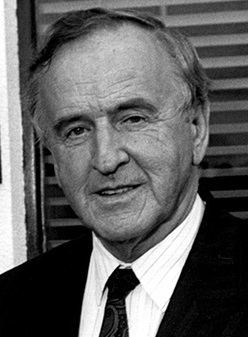25 November 1992 1997 → 77 seats, 44.2% 55 seats, 29.2% 68 45 | Turnout 68.5% 55 seats, 29.2% 15 seats, 9.5% 45 33 | |
 | ||
The Irish general election of 1992 was held on Wednesday, 25 November 1992, almost three weeks after the dissolution of the Dáil on 5 November. The newly elected 166 members of the 27th Dáil assembled at Leinster House on 14 December 1992, but a new Taoiseach was not elected. A new Fianna Fáil-Labour Party coalition government was not appointed until 12 January 1993 after Albert Reynolds was re-elected Taoiseach.
Contents
The general election took place in 41 parliamentary constituencies throughout Ireland for 166 seats in Dáil Éireann.
Campaign
The general election of 1992 was precipitated by the collapse of the Fianna Fáil–Progressive Democrats coalition government. Allegations of dishonesty at the Beef Tribunal forced Desmond O'Malley and his party to part ways with Albert Reynolds's Fianna Fáil. Both Albert Reynolds and John Bruton of Fine Gael were fighting their first general election as leader of their respective parties. For Reynolds it would be his only election as leader. The campaign went very poorly for Fianna Fáil with Reynolds's support dropping by 20%.
Among the left, the Labour Party had increased their support in the local elections the previous year and many were predicting major gains for the party in the Dáil. The Workers' Party of Ireland had split at a special convention that year over a motion to re-constitute the party, similar to the move made the same year by the Italian Communist Party, and sever all links with the Official IRA. Six out of their seven TD's and a majority of their councillors left the party when the motion failed to be passed and hastily formed Democratic Left to contest the election.
Many political pundits had predicted that Fianna Fáil would not be re-elected and that a "Rainbow Coalition" involving Fine Gael, the Labour Party and possibly Democratic Left would be formed. John Bruton, the leader of Fine Gael, had problems of his own. Opinion polls showed that if a "Rainbow Coalition" came to power, Dick Spring of the Labour Party was seen as a better potential Taoiseach than Bruton. The possibility of a rotating Taoiseach was also hinted at in the media.
The big winner of the campaign was Dick Spring and the Labour Party. They distanced themselves completely from Fine Gael and fought an independent line. During the campaign Spring made very little comment about what the party would do after the election, however, he did say that if the Labour Party was part of a coalition he would have to be granted a turn as Taoiseach.
The election also saw Moosajee Bhamjee (Labour Party) become the first Muslim Teachta Dála (TD).
Results
In 1989 the Democratic Socialist Party won 0.6% of the vote and 1 seat; the party merged with the Labour Party in 1990. Independents include Independent Fianna Fáil (5,248 votes, 1 seat).
†In early 1992, 6 Workers' Party TDs left the party and founded Democratic Left (DL).
When the votes were counted the picture was clear. Fianna Fáil had its worst performance since 1927, winning less than 40% of the vote. Fine Gael, in spite of predictions of success, actually lost 10 seats. The Labour Party recorded its best ever result, an event dubbed the "Spring Tide" and more than doubled its number of seats. Talks between Fine Gael and Labour on establishing a minority government floundered after several weeks, partly over the issue of the 'revolving Taoiseach'. Spring had to enter into coalition with Fianna Fáil, or force another election. The coalition deal proved very unpopular with many of Labour's supporters, because Dick Spring had campaigned heavily against Fianna Fáil and particularly Albert Reynolds. As a result of the coalition, Albert Reynolds was elected Taoiseach with over 100 votes, the biggest majority by any Taoiseach in Irish political history until 2011.
Following a number of scandals in 1994, particularly over the beef industry, the Labour Party left the coalition and, after negotiations, formed the "Rainbow Coalition" with Fine Gael and Democratic Left on 15 December 1994, as three by-election gains had by then made a Fine Gael-Labour-Democratic Left majority government possible. This was the first and to date, only occasion in Irish political history that a party had left a governing coalition and gone into government with opposition parties without first holding an election.
Dáil membership changes
The following changes took place as a result of the election:
Outgoing TDs are listed in the constituency they contested in the election. For some, such as John Stafford, this differs from the constituency they represented in the outgoing Dáil. Where more than one change took place in a constituency the concept of successor is an approximation for presentation only.
